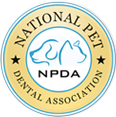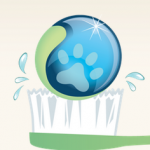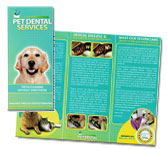“The services provided by Pet Dental Services have proven to be invaluable to our practice. Our clients appreciate the safety and convenience that non-anesthetic dentistry provides to their pets. Pet Dental Service’s staff is incredibly kind and patient with the pets in their care. Even some of our fearful patients are able to benefit from a full dental cleaning due to the gentle care provided by the PDS staff.”
The Importance of Animal Dental Care
Did you know that the 2011-2012 American Pet Products Association National Pet Owners Survey reports that there are over 78 million pet dogs and over 86 million pet cats throughout the country – almost one in three homes has a pet! Most owners maintain good vaccination and healthcare practices for their pets, but unfortunately dental care for the animal is often overlooked.
An animal dental care routine will help prevent serious health issues for cats and dogs. In fact, animal dental care is as important as vaccinations and other preventative health procedures like annual checkups. However, most pet owners do not incorporate pet dental hygiene into a daily or even annual routine. According to the American Veterinary Dental Society, 70 percent of felines and 80 percent of canines show symptoms of oral disease by the age of two. Oral disease is progressive and will worsen each year so it is important to stop it in its tracks.
Common Animal Dental Care Problems
Healthy pet gums look pink and healthy teeth are not discolored or covered in plaque. Signs of early gingivitis include a mild amount of plaque build-up on the teeth and gums that appear mildly red. In advanced gingivitis or periodontitis, plaque is present beneath the gum line and the gums often appear very red and swollen. They may even bleed when touched or when your pet eats.
Early periodontitis is the next stage of oral disease and it is the most common pet dental problem. At this point, the pet has redness, swelling, bleeding and sometimes overgrown gum tissue or hyperplasia. Many pets with periodontitis can also suffer from a 10 to 30 percentage loss of bone density in their jaw. In advanced periodontitis, there are large amounts of hard tartar beneath the gum, the gums are red, receded, bleed easily and show deep pockets. Teeth are loose or missing, and bone loss is over 30 percent. Periodontitis is irreversible, but the damage can be stopped so that it does not continue to progress. Animal dental care helps prevent the progression of oral disease and overall pet wellness.
Dental disease in animals is an invitation for other pet health problems, just as in humans. Bacteria in the pet’s mouth can find pathways to the lungs, bladder, kidneys and heart where they don’t belong and can be potentially harmful and shorten the lifespan of your pet. This can also be very painful.
Signs & Symptoms of Animal Dental Care Problems
Identifying animal dental care issues takes a bit of detective work, but if you know the signs and symptoms you may be able to prevent your pet from unnecessary pain and illness. A visual inspection of the teeth and gums is a good place to start, but there are other indicators of a pet with dental health issues. Bad breath and unusual or excessive drooling and pawing at the mouth can all be signs of an animal with dental problems.
Good pet oral hygiene begins at home and at an early age. While there are a number of products on the market for at home care, remember that just like humans pets need professional checkups as well. Always make sure your veterinarian inspects your pet’s mouth on every visit to insure that your dog or cat does not have any signs of dental disease. And always make sure to use Veterinary approved dental products as human products could potentially be harmful for our pets if ingested.

 Dr. Melissa Byers
Lake Forest Animal Clinic
Lake Forest, CA
Dr. Melissa Byers
Lake Forest Animal Clinic
Lake Forest, CA







